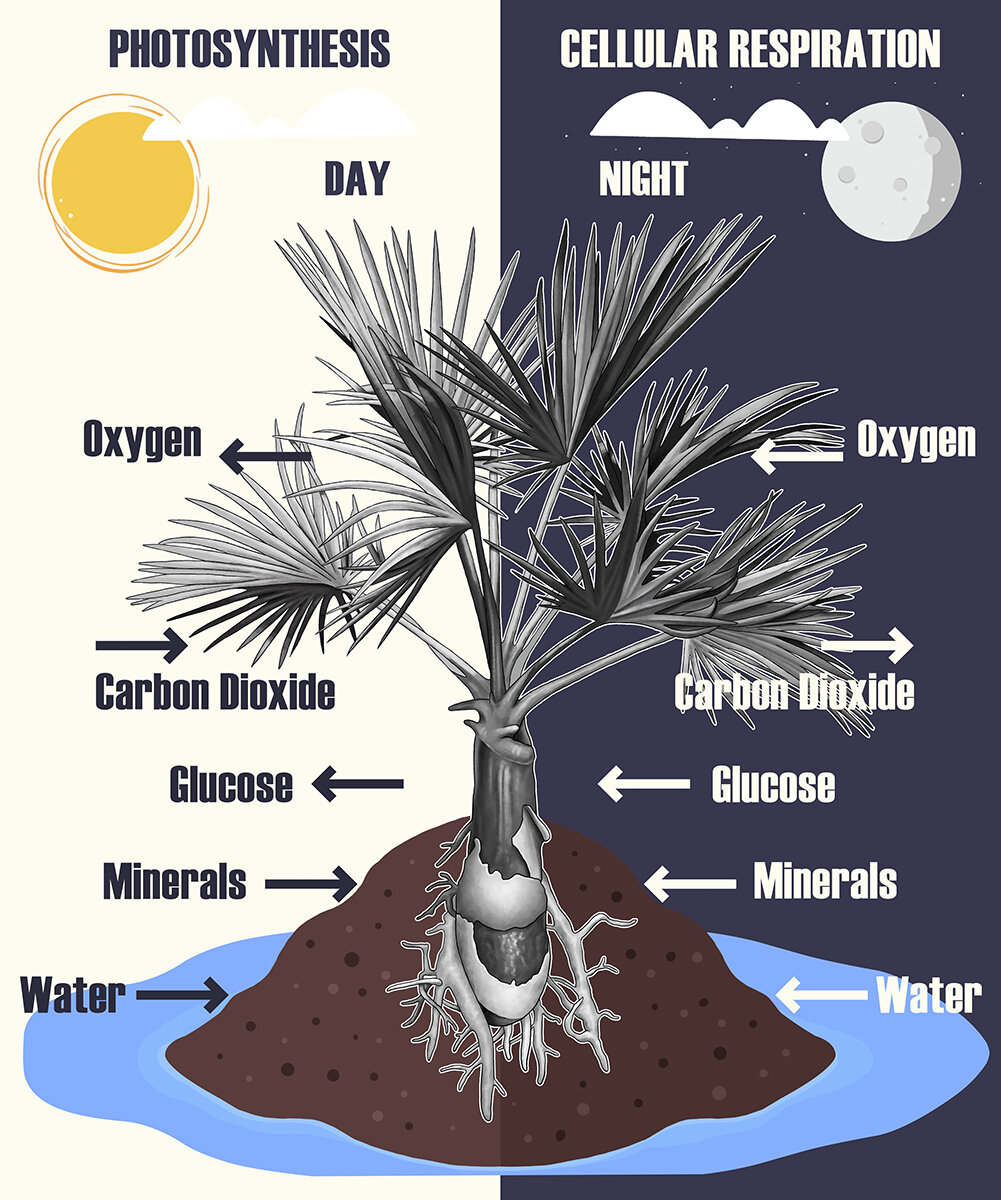Photosynthesis
A quick refresher on how plants grow and function
In this post we thought it might be helpful to provide some plant science refresher material—many of us have not discussed plant biology in depth since high school, and for anyone aspiring to have a garden designed by a professional or simply take on gardening as a hobby, there are some key concepts to remember.
Photosynthesis
Plants are autrophs—”self-feeders” because they convert certain inorganic elements such as carbon, oxygen, sulfur, etc. to organic forms for its own consumption. Leaves and some stems contain Chlorophyll—the green plant pigment that is responsible for photosynthesis. Plants with variegated leaves only photosynthesize through portion of the leaf that is green—containing chlorophyll. Now, through the Calvin Reaction Cycle plants convert the sun’s energy and carbon dioxide into sugar (glucose). Plants “breathe” and regulate temperature through their leaves. Stomates are located on the underside of the leaf; these pores opening and close throughout the day while permitting carbon dioxide to enter and oxygen to exit. Water also escapes through the stomata—this is called transpiration. Transpiration helps the plant regulate its temperature.
Roots
The roots are an organ of the plant (as are the leaves, flowers, and stem). The roots are responsible for anchorage, storage of food and intake of water and minerals and conducting that water and minerals to other parts of the plant. Spraying the leaves of the plants for the purpose of irrigation is not necessary for an established plant. Introducing irrigation near the root zone will help the plant with water uptake. For this reason we often recommend drip irrigation for shrubs.


